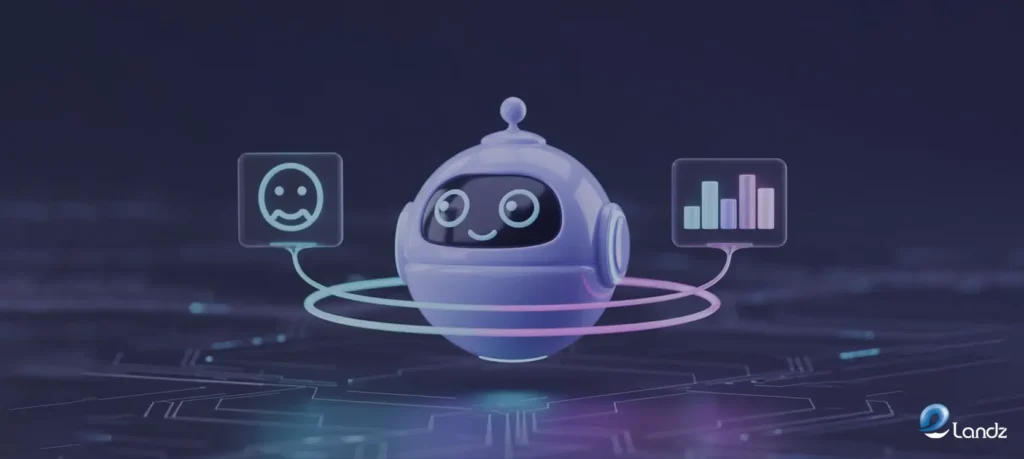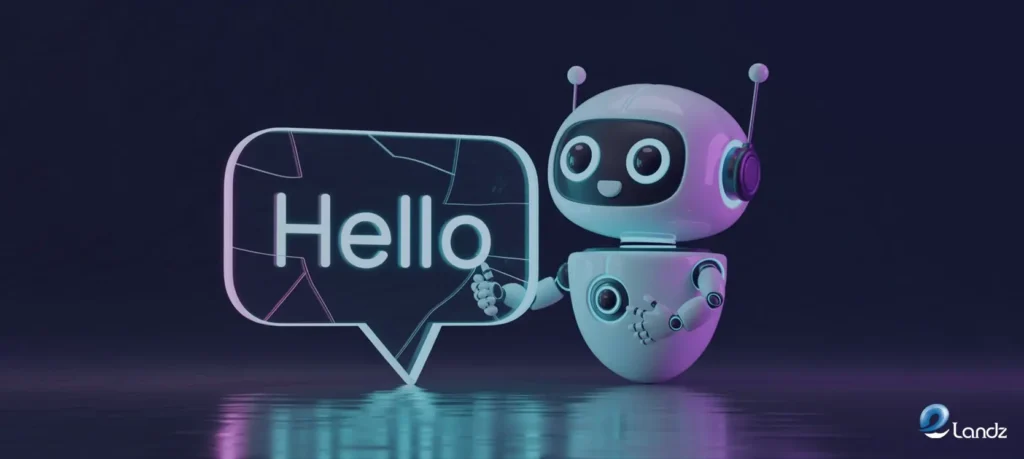
What is Chatbot Marketing and How Can It Help Your Business?
13 Aug 2025Introduction
Are you thinking, “What is chatbot marketing?” You’re not alone. As businesses worldwide embrace artificial intelligence to transform their customer interactions, chatbot marketing has emerged as a game-changing strategy that’s reshaping how companies connect with their audiences.
Simply put, chatbot marketing involves using automated conversational software to promote products, engage customers, and drive sales across various digital platforms. These intelligent programs can communicate with users through websites, social media platforms, messaging apps, and mobile applications, providing instant responses and personalized experiences 24/7.
Unlike traditional marketing methods that rely on one-way communication, chatbot marketing creates interactive conversations that feel natural and engaging. These digital assistants can answer questions, provide product recommendations, collect customer information, and guide users through the buying process.
Understanding the Core Components of Chatbot Marketing
Chatbot marketing operates through several key components that work together to create effective customer interactions. At its foundation, the technology combines automated messaging with strategic marketing objectives to create meaningful touchpoints throughout the customer journey.
The primary element is the conversational interface, which allows customers to interact with your brand through natural dialogue. This interface can be deployed across multiple channels simultaneously, ensuring consistent brand messaging regardless of where customers encounter your chatbot. The system processes user inputs, understands intent, and provides relevant responses based on pre-programmed scenarios or AI-driven understanding.
Automated Customer Engagement
Modern chatbots excel at initiating and maintaining conversations with potential customers without requiring constant human oversight. They can proactively reach out to website visitors, respond to social media inquiries, and engage users who interact with your content across different platforms.
These systems are designed to recognize conversation patterns and respond appropriately to various customer needs. Whether someone is asking about product features, seeking customer support, or showing interest in making a purchase, chatbots can adapt their communication style and content accordingly.
Data Collection and Analysis
Chatbots automatically collect contact information, track conversation topics, and monitor user engagement levels. This data helps businesses identify trending questions, popular products, and potential pain points in the customer experience. The insights gathered can inform future marketing campaigns, product development, and customer service improvements.
How Chatbot Marketing Transforms Business Operations

The implementation of chatbot marketing fundamentally changes how businesses approach customer relationships and marketing efficiency. Companies can now maintain continuous engagement with their audience while reducing operational costs and improving response times.
Research from Juniper indicates that chatbot-based spending increased from $7.3 billion in 2019 to $112 billion by 2023, demonstrating the rapid adoption and effectiveness of this technology. This growth reflects businesses recognizing the tangible benefits of automated customer engagement.
Round-the-Clock Availability
One of the most significant advantages of chatbot marketing is its ability to serve customers at any time of day or night. While human representatives have working hours and capacity limitations, chatbots remain active continuously, ensuring no potential customer interaction is missed.
This constant availability is particularly valuable for global businesses serving customers across different time zones. Studies show that approximately 51% of customers expect businesses to be available 24/7, making chatbot marketing essential for meeting modern consumer expectations.
Scalable Customer Interactions
Traditional marketing and customer service approaches face limitations when dealing with high volumes of simultaneous interactions. Human representatives can only handle one conversation at a time, creating bottlenecks during peak periods or promotional campaigns.
Chatbots eliminate this constraint by managing hundreds or thousands of conversations simultaneously. This scalability allows businesses to maintain service quality even during traffic spikes, product launches, or marketing campaigns that generate increased customer interest.
Key Benefits of Implementing Chatbot Marketing
The advantages of chatbot marketing extend beyond basic automation, offering strategic benefits that can significantly impact business growth and customer satisfaction. These benefits make chatbot marketing an attractive investment for businesses of all sizes.
Understanding these benefits helps businesses make informed decisions about implementing chatbot marketing strategies and sets realistic expectations for the outcomes they can achieve.
Enhanced Lead Generation and Qualification
Chatbots excel at identifying and nurturing potential customers through strategic questioning and engagement. They can qualify leads by gathering essential information about customer needs, budget, and timeline, ensuring sales teams focus their efforts on the most promising prospects.
Harvard Business Review research found that AI for lead generation can increase leads by 50%, highlighting the significant impact these systems can have on business growth. The automated nature of chatbot interactions ensures no potential lead goes unattended, regardless of when they first engage with your business.
Improved Customer Experience
Modern consumers expect instant gratification and immediate responses to their inquiries. Chatbots meet these expectations by providing immediate acknowledgment and assistance, reducing frustration associated with long wait times or delayed responses.
The personalization capabilities of advanced chatbots allow them to tailor conversations based on customer history, preferences, and current context. This level of customization creates more satisfying interactions that feel relevant and valuable to individual users.
Cost-Effective Marketing Solutions
Implementing chatbot marketing typically requires lower ongoing costs compared to maintaining large customer service or sales teams. Once deployed, chatbots can handle thousands of interactions without additional per-conversation costs, making them highly cost-effective for businesses with high customer interaction volumes.
The technology also reduces the need for extensive training programs and ongoing human resource management associated with traditional customer-facing roles. This efficiency allows businesses to allocate resources to other strategic initiatives while maintaining excellent customer engagement.
Practical Applications of Chatbot Marketing
Chatbot marketing can be applied across numerous business functions and customer touchpoints, making it a versatile tool for comprehensive marketing strategies. Understanding these applications helps businesses identify the most valuable use cases for their specific needs.
The flexibility of chatbot technology enables creative implementations that address unique business challenges and customer requirements across various industries and market segments.
Product Recommendations and Sales Support
Chatbots can analyze customer preferences, browsing history, and stated needs to provide personalized product recommendations. This capability mimics the experience of having a knowledgeable salesperson available at all times, guiding customers toward products that best meet their requirements.
The recommendation engine within chatbots can also suggest complementary products, upsell premium options, or highlight current promotions relevant to the customer’s interests. This proactive approach to sales support often results in higher average order values and improved customer satisfaction.
Appointment Scheduling and Service Booking
Service-based businesses can leverage chatbots to streamline their booking processes, allowing customers to schedule appointments, consultations, or service calls without human intervention. The chatbot can check availability, confirm details, and send reminders, reducing administrative burden on staff.
This automation is particularly valuable for businesses like salons, healthcare practices, consulting firms, and repair services where appointment scheduling represents a significant portion of customer interactions. Customers appreciate the convenience of booking services at their preferred time without waiting for business hours.
Customer Support and Troubleshooting
While primarily a marketing tool, chatbots can also handle common customer support inquiries, creating a seamless experience between marketing and service functions. They can provide answers to frequently asked questions, guide customers through troubleshooting steps, and escalate complex issues to human representatives when necessary.
This dual functionality ensures customers receive consistent service regardless of whether they’re seeking information about products or need help with existing purchases. The continuity creates a more cohesive brand experience and builds customer confidence in the business.
Building an Effective Chatbot Marketing Strategy
Successfully implementing chatbot marketing requires careful planning and strategic thinking about how the technology will integrate with existing marketing efforts and business objectives. A well-designed strategy ensures maximum return on investment and positive customer experiences.
The development process should consider technical requirements, customer expectations, brand voice, and integration with existing systems to create a comprehensive solution that supports long-term business goals.
Defining Clear Objectives and Metrics
Before implementing chatbot marketing, businesses must establish specific, measurable goals that align with their overall marketing strategy. These objectives might include increasing lead generation, improving customer engagement rates, reducing response times, or boosting sales conversion rates.
Setting clear metrics allows businesses to track progress and make data-driven decisions about optimizing their chatbot performance. Common metrics include conversation completion rates, lead qualification success, customer satisfaction scores, and conversion rates from chatbot interactions.
Choosing the Right Platform and Technology
The choice of chatbot platform significantly impacts the functionality, integration capabilities, and overall success of your marketing efforts. Different platforms offer varying levels of complexity, from simple rule-based systems to advanced AI-powered solutions with natural language processing capabilities.
Consider factors such as your technical expertise, integration requirements, scalability needs, and budget when selecting a platform. Many providers offer free trials or basic tiers that allow businesses to test functionality before making significant investments.
Developing Brand-Appropriate Conversation Flows
Your chatbot’s communication style should reflect your brand personality and maintain consistency with other customer touchpoints. Whether your brand voice is professional, friendly, humorous, or authoritative, the chatbot should embody these characteristics in every interaction.
Creating comprehensive conversation flows involves anticipating various customer scenarios and preparing appropriate responses. This preparation ensures the chatbot can handle diverse situations while maintaining a natural, helpful tone that enhances rather than detracts from the customer experience.
Common Mistakes to Avoid in Chatbot Marketing

While chatbot marketing offers numerous benefits, certain pitfalls can undermine its effectiveness and potentially damage customer relationships. Understanding these common mistakes helps businesses implement more successful chatbot strategies.
Avoiding these issues requires ongoing attention to chatbot performance, customer feedback, and regular updates to ensure the system continues meeting customer needs and business objectives.
Over-Relying on Automation
One significant mistake is attempting to automate every customer interaction without providing options for human assistance. While chatbots are highly capable, some situations require human empathy, complex problem-solving, or nuanced understanding that current technology cannot provide.
Successful chatbot marketing strategies include clear pathways for customers to connect with human representatives when needed.
Neglecting Ongoing Optimization
Regular monitoring, analysis, and optimization are essential for maintaining effectiveness and improving performance over time. Customer needs evolve, new products are launched, and market conditions change, all requiring updates to chatbot knowledge and capabilities.
Businesses should establish regular review cycles to analyze conversation data, identify common issues or gaps, and implement improvements. This ongoing attention ensures the chatbot remains valuable to customers and aligned with business objectives.
Overwhelming Customers with Messages
Another common mistake is being too aggressive with chatbot outreach, sending excessive messages, or interrupting customers with unwanted interactions. This approach can annoy potential customers and damage brand perception.
Effective chatbot marketing strikes a balance between being helpful and being intrusive. The system should respond when customers initiate contact or show clear interest, but avoid bombarding users with constant promotional messages or interruptions.
Measuring Success in Chatbot Marketing
Tracking the performance of your chatbot marketing efforts is crucial for understanding return on investment and identifying areas for improvement. Effective measurement requires establishing baseline metrics and monitoring key performance indicators that align with your business objectives.
Regular analysis of chatbot performance data provides insights that can inform broader marketing strategies and help optimize customer experience across all touchpoints.
Key Performance Indicators
Important metrics for chatbot marketing include conversation completion rates, which indicate how many interactions reach a satisfactory conclusion for the customer. High completion rates suggest the chatbot effectively addresses customer needs, while low rates may indicate issues with conversation flow or functionality.
Lead generation metrics track how many potential customers the chatbot identifies and qualifies, measuring both quantity and quality of leads produced. Conversion rates from chatbot interactions to sales provide direct insights into the marketing impact of your automated conversations.
Customer Satisfaction and Feedback
Regular collection of customer feedback about chatbot interactions provides qualitative insights that complement quantitative performance metrics. Satisfaction surveys, ratings systems, or simple feedback requests can reveal customer perceptions and preferences.
This feedback helps identify specific areas where the chatbot excels or falls short of customer expectations. Understanding customer perspectives allows businesses to make targeted improvements that enhance the overall experience and increase the likelihood of positive outcomes.
Future Trends in Chatbot Marketing

The evolution of chatbot marketing continues as technology advances and customer expectations change. Staying informed about emerging trends helps businesses prepare for future opportunities and maintain competitive advantages in their marketing efforts.
Understanding these trends also guides investment decisions and strategic planning for businesses considering expanding their chatbot marketing capabilities.
Increased Personalization Capabilities
Advanced AI technologies are enabling more sophisticated personalization in chatbot interactions. Future chatbots will better understand individual customer preferences, purchase history, and behavior patterns to deliver highly customized experiences.
This personalization extends beyond product recommendations to include communication style, timing preferences, and content types that resonate most with individual users. The result is more engaging, relevant interactions that feel increasingly human-like and valuable.
Voice-Enabled Interactions
The integration of voice technology with chatbot marketing is expanding interaction possibilities beyond text-based conversations.
This trend aligns with the growing popularity of voice assistants and smart speakers, creating opportunities for businesses to reach customers through additional channels and interaction methods.
Conclusion
Chatbot marketing represents a powerful opportunity for businesses to enhance customer engagement, streamline operations, and drive growth through automated yet personalized interactions. The technology offers significant benefits including improved lead generation, round-the-clock availability, cost-effective scaling, and valuable customer insights.
Success with chatbot marketing requires careful planning, appropriate technology selection, ongoing optimization, and integration with broader marketing strategies. By avoiding common pitfalls and focusing on customer value, businesses can leverage chatbot marketing to create competitive advantages and build stronger customer relationships.
As technology continues evolving, chatbot marketing will become even more sophisticated and valuable, making now an excellent time for businesses to explore and implement these powerful marketing tools.
FAQs
Check out this FAQ section!
How much does it cost to implement chatbot marketing?
The cost of chatbot marketing varies significantly based on complexity, features, and platform choice. Basic chatbot solutions can start from free tiers or low monthly fees, while advanced AI-powered systems with custom integrations may require substantial investments. Most businesses find cost-effective solutions that provide a positive return on investment through improved efficiency and increased conversions.
Can chatbots work effectively for small businesses?
Absolutely. Chatbot marketing is particularly valuable for small businesses because it allows them to provide professional customer service and marketing capabilities without large staff investments. Many chatbot platforms offer affordable solutions designed specifically for small business needs, with templates and simple setup processes that don’t require technical expertise.
What is chatbot marketing and how does it differ from traditional marketing?
Chatbot marketing uses automated conversational software to engage customers, promote products, and drive sales through interactive dialogues. Unlike traditional marketing which typically involves one-way communication like advertisements or emails, chatbot marketing creates two-way conversations that feel personal and responsive. This interactive approach allows for real-time customer engagement, immediate question answering, and personalized product recommendations based on individual customer needs and preferences.
How long does it take to see results from chatbot marketing?
Results from chatbot marketing can often be seen within the first few weeks of implementation, with immediate benefits like improved response times and increased customer engagement. However, significant impact on lead generation and sales typically develops over 2-3 months as the system learns from interactions and optimizations are made. Long-term benefits continue growing as more customer data is collected and chatbot capabilities are refined.
What industries benefit most from chatbot marketing?
While virtually any business with customer interactions can benefit, e-commerce, retail, healthcare, real estate, hospitality, and financial services see particularly strong results from chatbot marketing. These industries typically handle high volumes of customer inquiries, benefit from 24/7 availability, and can leverage chatbots for lead qualification, appointment scheduling, and customer support alongside marketing functions.


